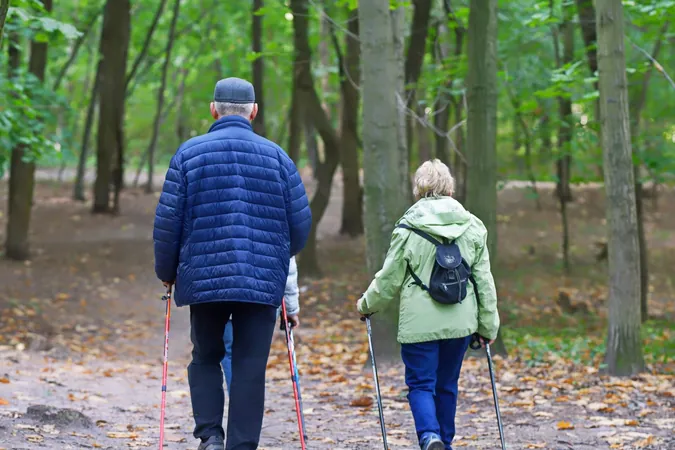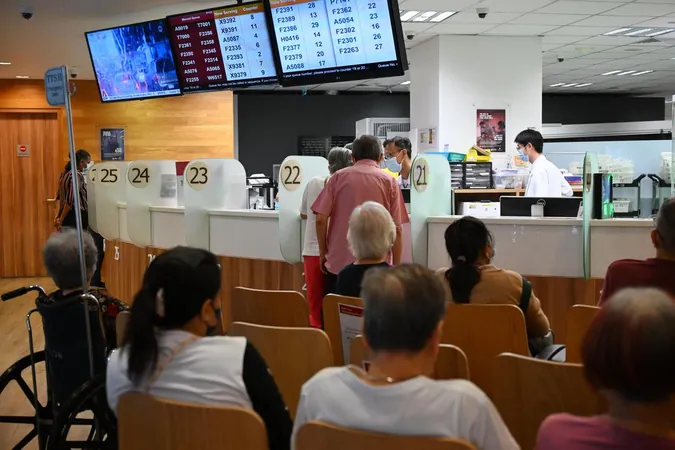
Unlocking Movement: How Brain Stimulation and Coaching Can Transform Elderly Lives
2025-07-07
Author: John Tan
Revolutionary Study: Brain Stimulation Boosts Activity in Seniors
A groundbreaking study published in The Journals of Gerontology: Series A reveals a powerful method to reinvigorate physical activity in older adults. By combining brain stimulation with personalized coaching, researchers found a way to significantly increase daily steps among inactive seniors, with results lasting for months!
A Wake-Up Call for Inactive Seniors
With over 85% of adults aged 65 and above failing to meet national physical activity guidelines, the need for effective solutions is urgent. The barriers—ranging from depression to lack of motivation—are well known, especially for seniors living in subsidized housing. But now, hope is on the horizon!
The Science Behind Increased Steps
In a randomized trial, seniors who received transcranial direct current stimulation (tDCS)—a noninvasive technique delivering low-level electrical currents to the brain—coupled with tailored coaching, increased their daily step count by an impressive average of 1,179 steps!
This phenomenal boost stands over twice that of those receiving only coaching. Remarkably, these increases remained even three months post-program, signifying a lasting impact.
Tailored Approaches for Lasting Change
The tDCS group participated in just 10 brief sessions focused on the left dorsolateral prefrontal cortex, a brain area pivotal for motivation and goal management. Alongside this stimulation, participants benefited from a two-month personalized behavioral program.
Coaching was delivered by skilled physical therapists and included regular check-ins, customized step goals, and practical strategies like marching during TV commercials or walking with friends. Fitbit devices tracked their progress, ensuring continued monitoring for 12 weeks after the intervention.
Staggering Engagement Levels
The commitment was striking—97% of tDCS sessions and 93% of coaching sessions were completed, with Fitbit usage remaining robust throughout. Even during a no-contact retention period, many participants sustained their increased activity, highlighting the effective behavioral shift.
Beyond Steps: A Boost in Confidence
Participants in the tDCS group not only walked more but also reported a significant increase in motivation and perceived walking ability. This suggests that tDCS could catalyze not only physical movement but also the persistence of positive behavioral changes, especially when combined with accessible coaching.
A Promising Blueprint for Future Interventions
According to Dr. On-Yee (Amy) Lo, assistant scientist at the Hinda and Arthur Marcus Institute for Aging Research, this study highlights an exciting potential: a short course of brain stimulation could 'prime the pump' for healthy habits, especially in underserved communities.
Importantly, the program was executed entirely within participants' housing facilities, tackling barriers to access—a model that could inspire future community-driven health initiatives.
Need for Further Research
While the findings are promising, the authors stress the necessity for larger trials to validate these results. They also emphasize exploring how factors like cognitive function, baseline activity levels, and social support may influence outcomes.
Hope for a Healthier Future
For seniors at high risk of health decline due to inactivity, this innovative approach shines a hopeful light. A newfound pathway to enhance movement and health in older adults may just be within reach!



 Brasil (PT)
Brasil (PT)
 Canada (EN)
Canada (EN)
 Chile (ES)
Chile (ES)
 Česko (CS)
Česko (CS)
 대한민국 (KO)
대한민국 (KO)
 España (ES)
España (ES)
 France (FR)
France (FR)
 Hong Kong (EN)
Hong Kong (EN)
 Italia (IT)
Italia (IT)
 日本 (JA)
日本 (JA)
 Magyarország (HU)
Magyarország (HU)
 Norge (NO)
Norge (NO)
 Polska (PL)
Polska (PL)
 Schweiz (DE)
Schweiz (DE)
 Singapore (EN)
Singapore (EN)
 Sverige (SV)
Sverige (SV)
 Suomi (FI)
Suomi (FI)
 Türkiye (TR)
Türkiye (TR)
 الإمارات العربية المتحدة (AR)
الإمارات العربية المتحدة (AR)